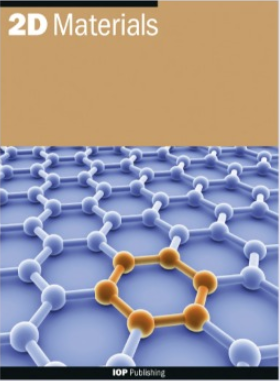Five near-infrared-emissive graphene quantum dots for multiplex bioimaging.
IF 4.5
3区 材料科学
Q2 MATERIALS SCIENCE, MULTIDISCIPLINARY
引用次数: 0
Abstract
Due to high tissue penetration depth and low autofluorescence backgrounds, near-infrared (NIR) fluorescence imaging has recently become an advantageous diagnostic technique used in a variety of fields. However, most of the NIR fluorophores do not have therapeutic delivery capabilities, exhibit low photostabilities, and raise toxicity concerns. To address these issues, we developed and tested five types of biocompatible graphene quantum dots (GQDs) exhibiting spectrally-separated fluorescence in the NIR range of 928 – 1053 nm with NIR excitation. Their optical properties in the NIR are attributed to either rare-earth metal dopants (Ho-NGQDs, Yb-NGQDs, Nd-NGQDs) or defect-states (NGQDs, RGQDs) as verified by Hartree-Fock calculations. Moderate up to 1.34 % quantum yields of these GQDs are well-compensated by their remarkable >4-hour photostability. At the biocompatible concentrations of up to 0.5 – 2 mg/mL GQDs successfully internalize into HEK-293 cells and enable in vitro imaging in the visible and NIR. Tested all together in HEK-293 cells five GQD types enable simultaneous multiplex imaging in the NIR-I and NIR-II shown for the first time in this work for GQD platforms. Substantial photostability, spectrally-separated NIR emission, and high biocompatibility of five GQD types developed here suggest their promising potential in multianalyte testing and multiwavelength bioimaging of combination therapies.用于多重生物成像的五个近红外发射石墨烯量子点。
近红外(NIR)荧光成像具有组织穿透深度高、自发荧光背景低等优点,近年来已成为一种优势诊断技术,被广泛应用于多个领域。然而,大多数近红外荧光团不具备治疗传递能力,光稳定性低,而且存在毒性问题。为了解决这些问题,我们开发并测试了五种生物相容性石墨烯量子点(GQDs),在近红外激发下,它们在 928 - 1053 nm 的近红外范围内表现出光谱分离的荧光。经哈特里-福克计算验证,它们在近红外的光学特性可归因于稀土金属掺杂物(Ho-NGQDs、Yb-NGQDs、Nd-NGQDs)或缺陷态(NGQDs、RGQDs)。这些 GQDs 高达 1.34% 的适度量子产率可以通过其大于 4 小时的出色光稳定性得到很好的补偿。在 0.5 - 2 mg/mL 的生物相容性浓度下,GQDs 能成功内化到 HEK-293 细胞中,并能在可见光和近红外条件下进行体外成像。在 HEK-293 细胞中进行的所有测试中,五种 GQD 类型可同时在近红外-I 和近红外-II 中进行多重成像,这在 GQD 平台中尚属首次。这里开发的五种类型的 GQD 具有很强的光稳定性、光谱分离的近红外发射和很高的生物相容性,这表明它们在联合疗法的多分析测试和多波长生物成像方面具有很大的潜力。
本文章由计算机程序翻译,如有差异,请以英文原文为准。
求助全文
约1分钟内获得全文
求助全文
来源期刊

2D Materials
MATERIALS SCIENCE, MULTIDISCIPLINARY-
CiteScore
10.70
自引率
5.50%
发文量
138
审稿时长
1.5 months
期刊介绍:
2D Materials is a multidisciplinary, electronic-only journal devoted to publishing fundamental and applied research of the highest quality and impact covering all aspects of graphene and related two-dimensional materials.
 求助内容:
求助内容: 应助结果提醒方式:
应助结果提醒方式:


